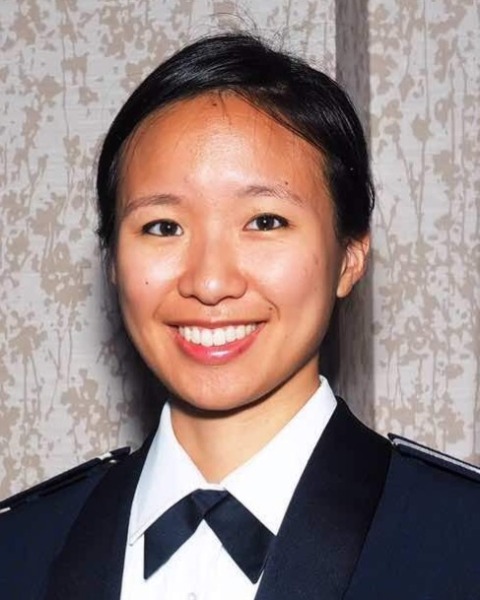Mental Health 3
Session: Mental Health 3
082 - Post-Injury Mental Health Care Utilization: Disparities in Care for Children Compared to Adults
Monday, April 28, 2025
7:00am - 9:15am HST
Publication Number: 82.6238
Camille Vu, Uniformed Services University of the Health Sciences F. Edward Hebert School of Medicine, SILVER SPRING, MD, United States; Sarah Prabhakar, Uniformed Services University of the Health Sciences F. Edward Hebert School of Medicine, Bethesda, MD, United States; Ian S. Sorensen, Henry M Jackson Foundation for the Advancement of Military Medicine, Inc, Bethesda, MD, United States; Kalyn C.. Jannace, Uniformed Services University of the Health Sciences F. Edward Hebert School of Medicine, Bethesda, MD, United States; Rebecca N. Schulz, Henry M. Jackson Foundation, Rockville, MD, United States; Siddarth Sharma, Uniformed Services University of the Health Sciences F. Edward Hebert School of Medicine, Bethesda, MD, United States; Elizabeth J. Hisle-Gorman, Uniformed Services University of the Health Sciences F. Edward Hebert School of Medicine, Bethesda, MD, United States

Camille Vu, MD (she/her/hers)
Pediatrician and Preventive Medicine Resident
Uniformed Services University of the Health Sciences F. Edward Hebert School of Medicine
Silver Spring, Maryland, United States
Presenting Author(s)
Background: Adverse childhood experiences have lasting impacts on health and well-being. Mental health care (MH) after traumatic events may ameliorate outcomes. MH use by children compared to adults after serious injury is unknown.
Objective: The aim is to compare utilization of post-injury mental health specialty care by children compared to adults.
Design/Methods: Military Health System (MHS) Data from 2005-2015 was used to conduct a retrospective cohort study comparing post-injury rates of mental health care (MH) for children as compared to adults. ICD-9 codes identified injuries in the inpatient and outpatient record. Provider specialty identified MH encounters within one year post-injury. Poisson regression calculated unadjusted and adjusted rates of MH overall and stratified by injury type. Model 1 compared all adults to children. Model 2 compared military members to children and spouses to children separately as the MHS preferentially provides care to military members. Models were adjusted for age, sex, sponsor race, and sponsor rank (socioeconomic status surrogate).
Results: We identified 103,678 children and 453,393 adults with serious injuries (Table 1). Any MH use was higher in military members, males, those of Asian/Pacific Islander race, lowest rank group (Junior Enlisted), and those with a mental health or post-traumatic stress disorder (PTSD) injury (Table 1). The median number of MH encounters for children was 0 [IQR 0,14] compared to 6 [IQR 0, 19] for adults, including military adults 6 [IQR 0, 19] and spouses 4 [IQR 0, 14]. MH use was increased in adults versus children overall in unadjusted (RR 2.12, 95% CI [2.11-2.12]) and adjusted (1.64 [1.64-1.65]) analyses, and for all injury types. Military members had higher MH rates than children in overall unadjusted and adjusted models and for all injury types (Table 2). Adult spouses of service members had higher MH rates overall in unadjusted analysis, but lower MH rates in adjusted analysis. Adult spouses had increased MH rates compared to children for all injury types except burns (no significant difference), and other mental health and PTSD injury categories (decreased for adult spouses versus children).
Conclusion(s): Post-injury MH rates were lower in children compared to military adults for all mental and physical injury types examined. Children had higher MH rates than adult military spouses following a mental health or PTSD injury diagnosis, but not following a physical injury. Results suggest that post-injury MH may be underutilized in children, and that children’s MH needs after physical injury may be underrecognized.
Table 1. Demographics, Injury Type, and Mental Health Care of Cohort
.jpg) This table shows cohort demographics and the percent who received any mental health care within one year post-injury. A person may be diagnosed with more than one injury type.
This table shows cohort demographics and the percent who received any mental health care within one year post-injury. A person may be diagnosed with more than one injury type.Table 2. Adjusted Mental Health Care Rates by Family Role and Injury Type
.jpg) This table shows the relative risk (RR) for mental health care rates in adults versus children (Model 1), military members versus children (Model 2), and spouses versus children (Model 2). The adjusted models accounted for age, sex, sponsor race, and sponsor rank.
This table shows the relative risk (RR) for mental health care rates in adults versus children (Model 1), military members versus children (Model 2), and spouses versus children (Model 2). The adjusted models accounted for age, sex, sponsor race, and sponsor rank.
